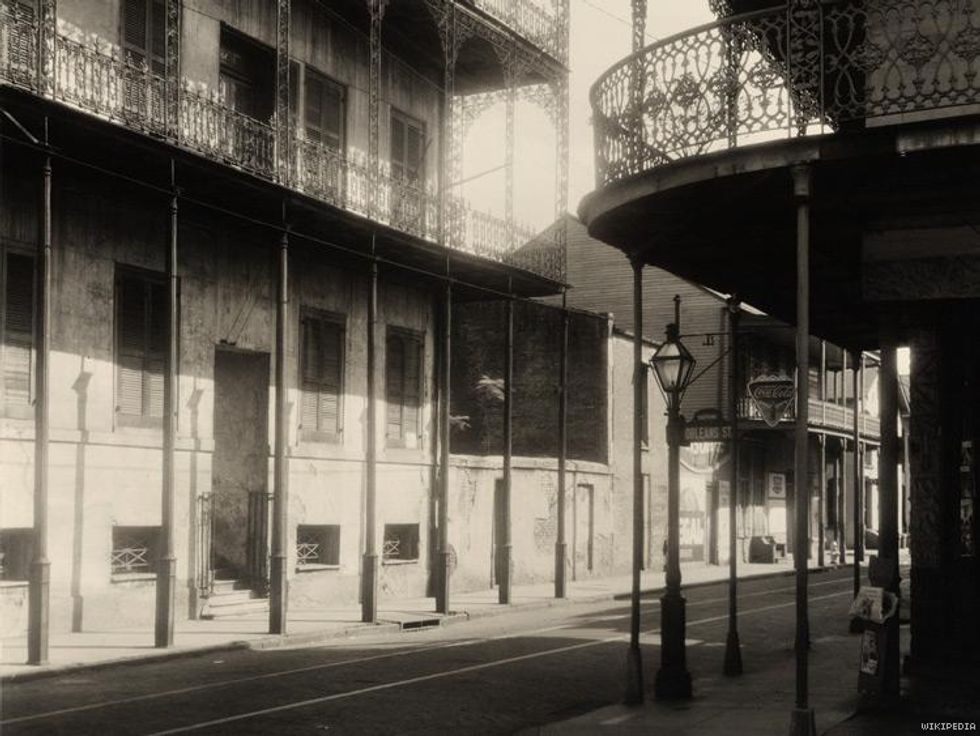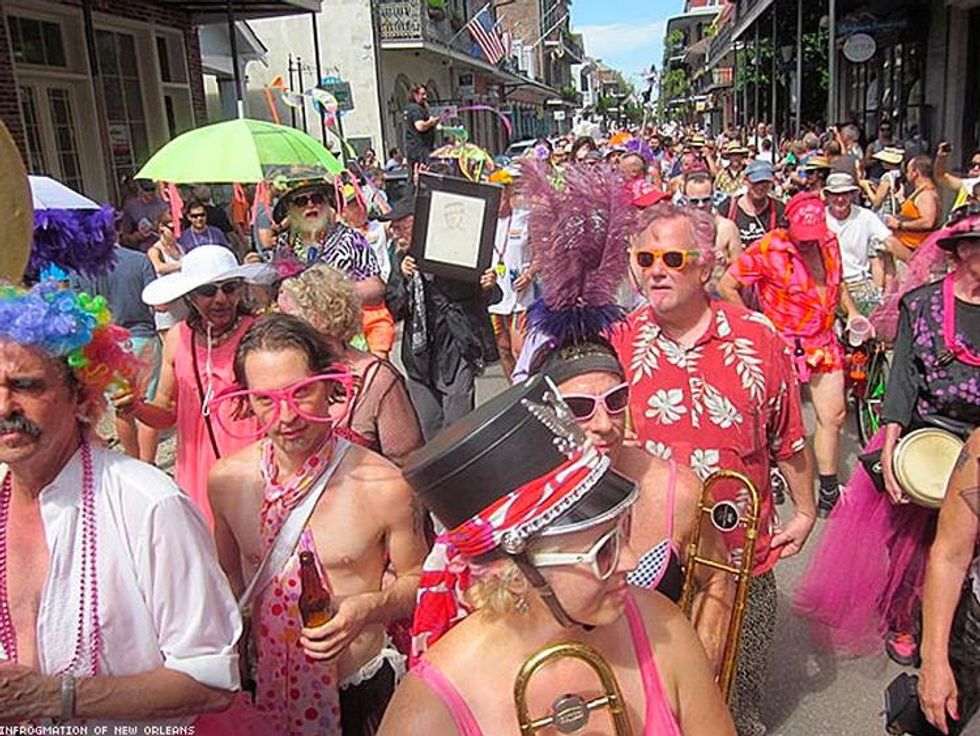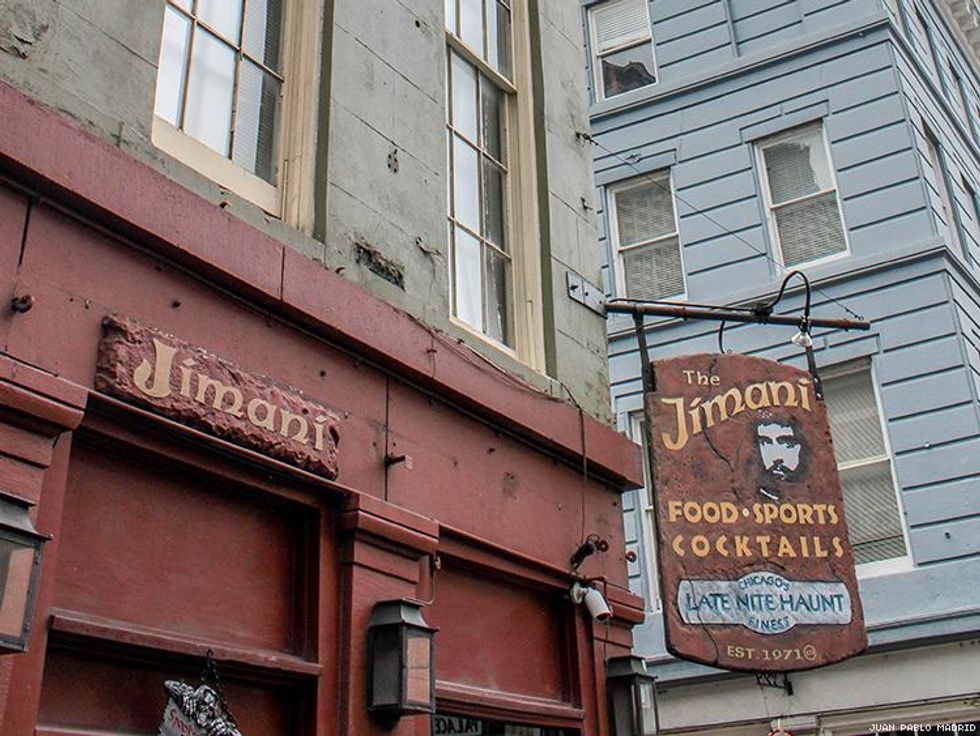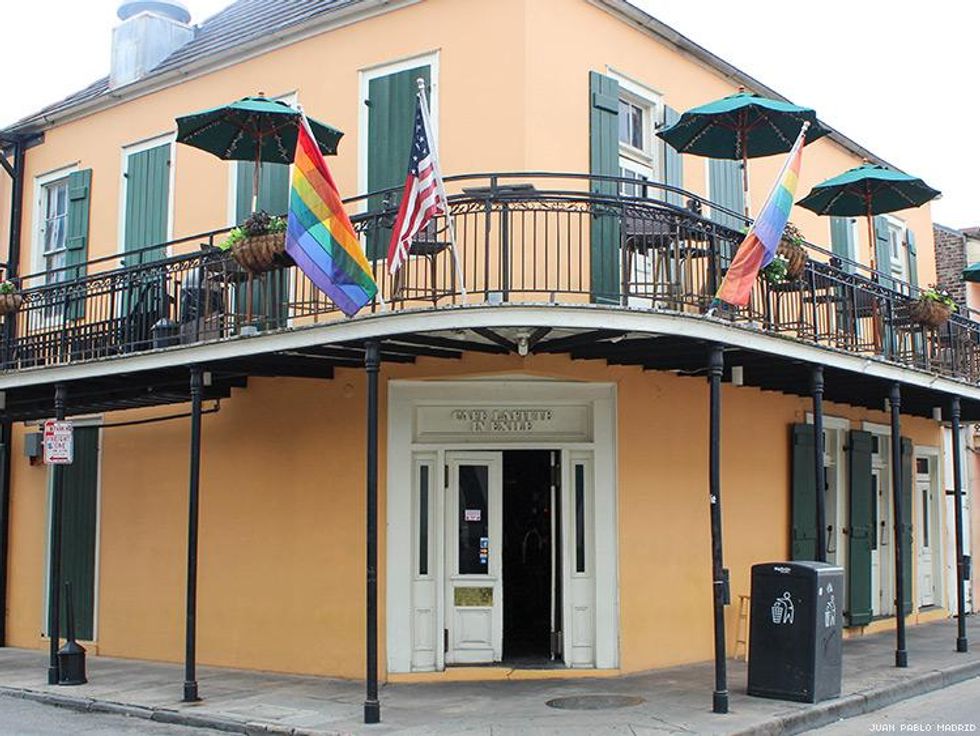Voices
The Stories Behind 4 Gay New Orleans Landmarks

Just in time for Southern Decadence, historian Frank Perez tells us the tales of vibrant gay New Orleans.
September 02 2016 5:28 AM EST
By continuing to use our site, you agree to our Privacy Policy and Terms of Use.

Just in time for Southern Decadence, historian Frank Perez tells us the tales of vibrant gay New Orleans.
New Orleans has produced plenty of LGBT history in its three centuries and served as inspiration for queer legends from Tennessee Williams to Big Freedia. In honor of the city's biggest gay party -- Southern Decadence, happening now -- we asked local gay historian Frank Perez to tell us about four of the city's most unforgettable gay landmarks. Some of these places were incubators for art and activism; others were tragic resting places. Here are their stories:

Born in the Victorian era during the Civil War, Johnston grew up in Washington, D.C., before studying art in Paris. Upon returning to the States, she took up photography and blazed a trail in that (then) young field for other lesbian photographers, such as Clara Sipprell, Alice Austin, and later, Annie Leibovitz. Johnston quickly became one of the country's first female photojournalists before opening her own studio to focus on portraiture. In addition to concentrating on female nudes, something quite extraordinary for the time, she also began photographing celebrities, politicians, and members of Washington society. She photographed five U.S. presidents, and Theodore Roosevelt named her the first official White House photographer. Johnston then turned her lens to gardens and estates before embarking on a remarkable project to pictorially document Southern architecture. She also documented the lives of factory workers and African-American students in the South, most notably the Tuskegee Institute in Alabama. The images in your head when you think of Mark Twain or Susan B. Anthony are likely hers, literally. She also took a memorable photograph of famed lesbian Natalie Clifford Barney, who ran an influential literary salon in Paris for nearly 60 years. Johnston first photographed New Orleans in 1938, and as any photographer would, she fell in love with the city. Always a strong-willed, independent woman with a disdain for staid traditions and conventional morality, she found the bohemian vibe of the French Quarter appealed to her. In 1940 she rented an apartment at 812 Dauphine St., where she lived five years before renting another apartment at 929 Dumaine St. Shortly thereafter, she bought a home at 1132 Bourbon St. Johnston renovated the place and rented out the second and third floors as well as the slave quarters, while retaining the first floor as her residence and studio/darkroom. She called the place "Arkady." In 1951 Johnston bought a second home at 1438 Euterpe St., but remained living in the Quarter. Johnston spent her time in the Quarter working, drinking, smoking, and socializing with friends.

This intersection is the site of a popular feature of gay carnival in New Orleans: the Bourbon Street Awards, which is a contest featuring elaborate Carnival costumes. In 1964 the owner of the Clover Grill wanted to drum up business for his diner and inaugurated a Mardi Gras costume contest. This event evolved into the extravaganza it is today. Over the years, the Bourbon Street Awards has garnered the attention of the international media. The modern incarnation of gay Carnival began in 1958 when Doug Jones and a group of his friends formed the Krewe of Yuga --KY -- as a spoof of the mainstream krewes. (Krewes are groups that hold parades and balls during Carnival season.) The first four KY "balls" were held in private homes, but eventually the growth of the krewe and its ball's popularity necessitated a larger meeting space. One of the members worked at a school in Metairie and suggested they use the school cafeteria as the location of their fifth ball masque. On the night of the ball, the Metairie suburbanites became somewhat alarmed when they noticed dozens of gay men streaming into the school. The Jefferson Parish Sheriff's office was notified, and just as the ball got under way, the police arrived and raided the event. Fearing arrest and the subsequent public outing that accompanied such raids, several men ran out of the building and hid in the woods behind the school. Of the mayhem, Albert Carey, a historian of the gay Armeinius krewe, writes, "One story has the Queen hiding in these bushes as the troopers came through with their flashlights. Sparkling in the high beams of light, his rhinestone tiara gave him away." After the raid, Miss Dixie, legendary owner of Dixie's Bar of Music, hired an attorney for all those arrested and paid many of the jailed men's bail. The next day's newspaper published the names of nearly 100 men arrested in the raid. The Krewe of Yuga folded as a result of the ensuing scandal. Other gay krewes were formed in subsequent years. Today there are seven gay Carnival krewes in New Orleans.

At the corner of Chartres and Iberville streets is a bar called Jimani's. In 1973 the second floor of the building housed a gay bar called the Up Stairs Lounge. On Sunday evening, June 24, 1973, the deadliest crime against gays and lesbians in the history of the United States, until this year's Orlando massacre, occurred here. On that night, an arsonist set the gay bar on fire, killing 32 people and injuring more. Many people, then and now, mistakenly believe the fire was a hate crime motivated by homophobia. It wasn't. Rather, the crime was motivated by anger and revenge. On that fateful evening, an unruly hustler, Rodger Dale Nunez, was thrown out of the bar for badgering and fighting with a regular customer, Mike Scarborough. Scarborough was in the bathroom when Nunez, who was in the next stall, started harassing him through the glory hole. Scarborough complained to the bartender. As he was being escorted out of the bar, Nunez threatened to "burn you all out." About 30 minutes later, a fire broke out on the stairwell. Then the buzzer in the bar rang which usually meant a cab had arrived. Luther Boggs, a regular at the lounge, opened the door to the stairwell to be greeted by roaring flames. As the fire spread, panic ensued. Bartender Buddy Rasmussen led about 20 people through a rear fire exit that was not clearly marked. Many dashed for the windows, but the windows had burglar bars. A few were skinny enough to squeeze through, but the others were doomed. The victims of the fire are listed on a sidewalk plaque in front of the stairwell.
[RELATED: Remembering the Worst Mass Killing of LGBT People in U.S. History]

Cafe Lafitte in Exile is the oldest gay bar in New Orleans and arguably the oldest continuously operating gay bar in North America. Founded in 1933, the bar was originally located down the street where Lafitte's Blacksmith Shop now is. Back then, gay bars as we know them now did not exist, as homosexuality was illegal, but the owners of Cafe Lafitte (one of whom was a lesbian) were open-minded and welcomed their gay clientele. The bar was as gay-friendly as the times would permit. In 1953 the building came under a new owner who did not want gay people in the bar. The Cafe Lafitte owners signed a lease on a new place and called it Cafe Lafitte in Exile, referring to the regular patrons' status as being "in exile" from their former bar home. According to legend, on the night the bar opened several regulars went to the old bar to have one drink and then picked up their barstools and marched down the street to the new bar. Tennessee Williams was a regular at this bar when he lived in New Orleans. By the 1960s, Cafe Lafitte in Exile had a notorious reputation as a cruise bar. Because of this notoriety, the U.S. Navy sent a letter to the bar declaring it off limits to personnel of the U.S. Armed Forces. The letter is on permanent and proud display on the wall just inside the front door.
FRANK PEREZ is a writer who has authored two books: In Exile: The History and Lore Surrounding New Orleans Gay Culture and Its Oldest Gay Bar (with Jeffrey Palmquist) and Treasures of the Vieux Carre: Ten Self-Guided Walking Tours of the French Quarter. He and Palmquist are coeditors of My Gay New Orleans: 28 Personal Reminiscences on LGBT+ Life in New Orleans. He also writes a column on LGBT+ New Orleans history for Ambush magazine; owns a small business and is a licensed tour guide; and is a founding member and current president of the LGBT+ Archives Project, a nonprofit that promotes the preservation of LGBT+ history. Perez is also licensed guide for FUHWE and leads an LGBT history experience of New Orleans called French Quarter Personal Insights. He lives in the French Quarter.
Charlie Kirk DID say stoning gay people was the 'perfect law' — and these other heinous quotes